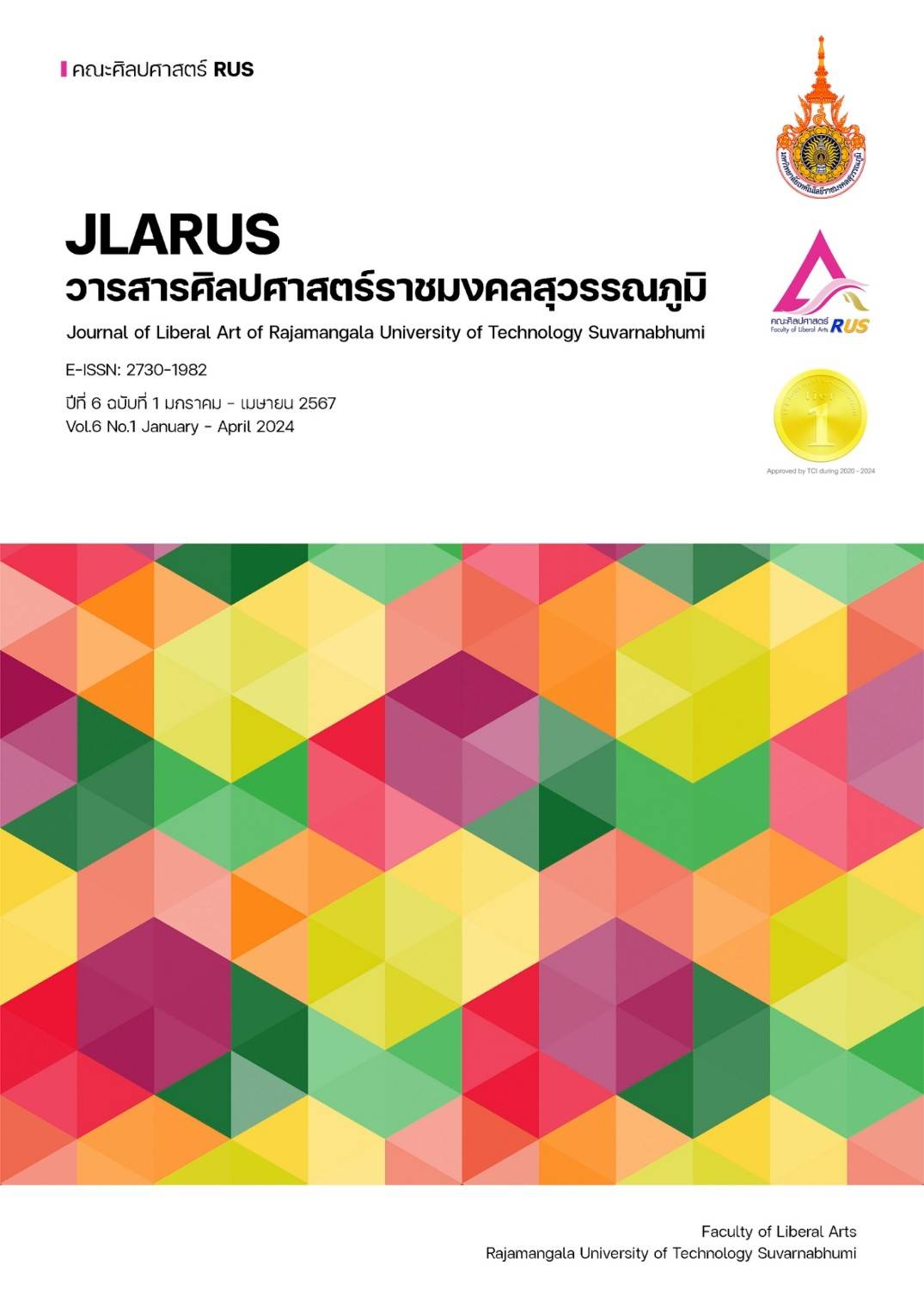MASCULINITY CONNOTATIONS REFLECTED IN PRIMARY-LEVEL THAI LANGUAGE TEXTBOOKS
Main Article Content
Abstract
This research article aimed to explore the connotations of masculinity reflected in primary-level Thai language textbooks for Grades 1-6 through the characteristics of masculinity in male characters in the textbooks’ main lessons. The research scope was a series of Thai language textbooks, “Language for Life: Phasa Phathi”, for Grades 1-6 composed by the Office of the Basic Education Commission, Ministry of Education, Thailand. Approaches to literary analysis were conducted to collect the data from 88 lessons in the textbooks and examine related research studies. After that, the data were analyzed, and the results of the research were reported using descriptive analysis, followed by a summary and discussion of the results.
According to the results, the Thai language textbooks series for Grades 1-6 displayed masculine characteristics through male characters in three age periods: 1. masculinity during childhood and youth, which included 1.1) being a leader among friends, 1.2) being considerate, 1.3) accepting mistakes, and 1.4) expressing forgiveness; 2. masculinity during adulthood, which consisted of 2.1) community leadership, 2.2) commitment to a career, and 2.3) loyalty to the monarchy; 3. masculinity during old age, which included 3.1) recognition of the monarchy as a refuge for the Thai people, 3.2) social contribution, and 3.3) education provision for children and grandchildren.
In terms of the body of knowledge, the connotations of masculinity reflected in the primary-level Thai language textbooks instilled values and appropriate male behavior in students, which was in line with the social norms that the government had created and promoted through Thai language for Grades 1-6.
Article Details

This work is licensed under a Creative Commons Attribution-NonCommercial-NoDerivatives 4.0 International License.
References
กระทรวงศึกษาธิการ. (2564). หนังสือเรียน รายวิชาพื้นฐาน ภาษาไทย ชุดภาษาเพื่อชีวิต ภาษาพาที ชั้นประถมศึกษาปีที่ 2. (พิมพ์ครั้งที่ 17). กรุงเทพมหานคร: โรงพิมพ์สกสค.
กระทรวงศึกษาธิการ. (2564). หนังสือเรียน รายวิชาพื้นฐาน ภาษาไทย ชุดภาษาเพื่อชีวิต ภาษาพาที ชั้นประถมศึกษาปีที่ 3. (พิมพ์ครั้งที่ 15). กรุงเทพมหานคร: โรงพิมพ์สกสค.
กระทรวงศึกษาธิการ. (2564). หนังสือเรียน รายวิชาพื้นฐาน ภาษาไทย ชุดภาษาเพื่อชีวิต ภาษาพาที ชั้นประถมศึกษาปีที่ 4. (พิมพ์ครั้งที่ 18). กรุงเทพมหานคร: โรงพิมพ์สกสค.
กระทรวงศึกษาธิการ. (2563). หนังสือเรียน รายวิชาพื้นฐาน ภาษาไทย ชุดภาษาเพื่อชีวิต ภาษาพาที ชั้นประถมศึกษาปีที่ 5. (พิมพ์ครั้งที่ 14). กรุงเทพมหานคร: โรงพิมพ์สกสค.
กระทรวงศึกษาธิการ. (2563). หนังสือเรียน รายวิชาพื้นฐาน ภาษาไทย ชุดภาษาเพื่อชีวิต ภาษาพาที ชั้นประถมศึกษาปีที่ 6. (พิมพ์ครั้งที่ 13). กรุงเทพมหานคร: โรงพิมพ์สกสค.
ณัฐกฤตา นามมนตรี. (2561). ภาพแทนที่ปรากฏในตัวละครเอก จากหนังสือเรียนรายวิชาพื้นฐานภาษาไทย ชุดภาษาพาที ระดับชั้นประถมศึกษาปีที่ 1-6. วารสารมหาวิทยาลัยราชภัฏมหาสารคาม, 12(2), 467-478.
ณัฐราพร พรหมประสิทธิ์. (2560). บทบาทหญิงชายในการศึกษาระดับประถมของประเทศเมียนมา. สารอาศรมวัฒนธรรมวลัยลักษณ์, 17(2), 27-47.
นัยน์พัศ อธิษฐ์พัส. (2563). วิกฤตความเป็นชายในนวนิยายเรื่อง อกโตสะโพกใหญ่. วารสารจีนศึกษามหาวิทยาลัยเกษตรศาสตร์, 13(1), 82-107.
นิศา ชูโต และกล่อมจิตต์ พลายเวช. (2527). สภาพและแนวโน้มหนังสือเด็ก. กรุงเทพมหานคร: คณะอนุกรรมการอุดมการณ์ของชาติในคณะกรรมการเอกลักษณ์ชาติ.
ปริยาภัทร เพ็ชรจรูญ. (2564). วิเคราะห์คุณลักษณะอันพึงประสงค์ของพลเมืองเด็กที่ปรากฏในบทร้อยกลอง จากหนังสือวันเด็กแห่งชาติ (พ.ศ. 2508 – 2562) (วิทยานิพนธ์ปริญญาการศึกษามหาบัณฑิต). สงขลา: มหาวิทยาลัยทักษิณ.
สหะโรจน์ กิตติมหาเจริญ. (2551). “สุภาพบุรุษ” ในพระราชนิพนธ์ ในพระบาทสมเด็จพระมงกุฎเกล้าเจ้าอยู่หัวกับวรรณกรรมศรีบูรพา (วิทยานิพนธ์ปริญญาดุษฎีบัณฑิต). กรุงเทพมหานคร: จุฬาลงกรณ์มหาวิทยาลัย.
อรทัย เพียยุระ. (2561). วรรณกรรมกับเพศภาวะ. (พิมพ์ครั้งที่ 2). ขอนแก่น: ขอนแก่นการพิมพ์.


